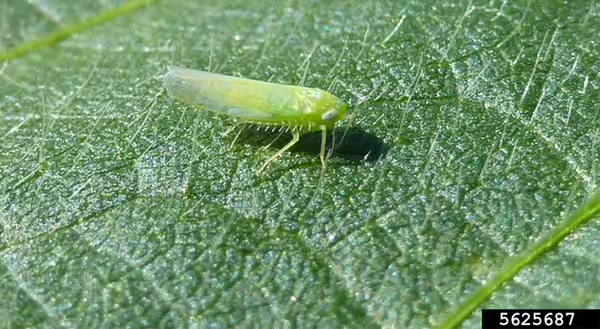
It is starting to be potato leafhopper season in Illinois. Potato leafhoppers are pests on a variety of crops (fruit, vegetable, ornamental) and they do not overwinter here, so they migrate in from the south as the weather warms up. Potato leafhoppers feed by inserting their needle-like mouthparts into leaves and shoots and sucking out plant fluids. While feeding, they inject a toxin which causes a variety of symptoms, usually called hopper burn. In our research we deal with them pretty consistently in tomatoes, both in high tunnels and in open fields. Potatoes and beans are both vulnerable to potato leafhoppers. In fruit, they can also be a problem in apples and I have had some reports of them this season.
In apples, potato leafhopper feeding causes cupping of new leaves and greatly reduced growth of new shoots. Usually, potato leafhopper damage is most common in young trees that are not yet bearing fruit, as growers are not spraying them regularly for other insect pests. To determine if you have potato leafhoppers, examine the undersides of leaves. Look for light-green, narrow, small (< 1/8 inch long) insects that tend to move sideways when disturbed. Thresholds suggested for potato leafhopper control range from treating whenever adults and nymphs are found on young trees to 1 adult or nymph per leaf on older trees where vigorous new growth is less important. There are several insecticides with good to excellent control of potato leafhoppers: a variety of pyrethroids (Baythroid, Danitol, Mustang Maxx, Proaxis), Assail, Avaunt, and Sivanto Prime. For more information about control, consult the 2023-2024 Midwest Fruit Pest Management Guide. Potato leafhopper. Photo credit: Daren Mueller, Iowa State University, Bugwood.org